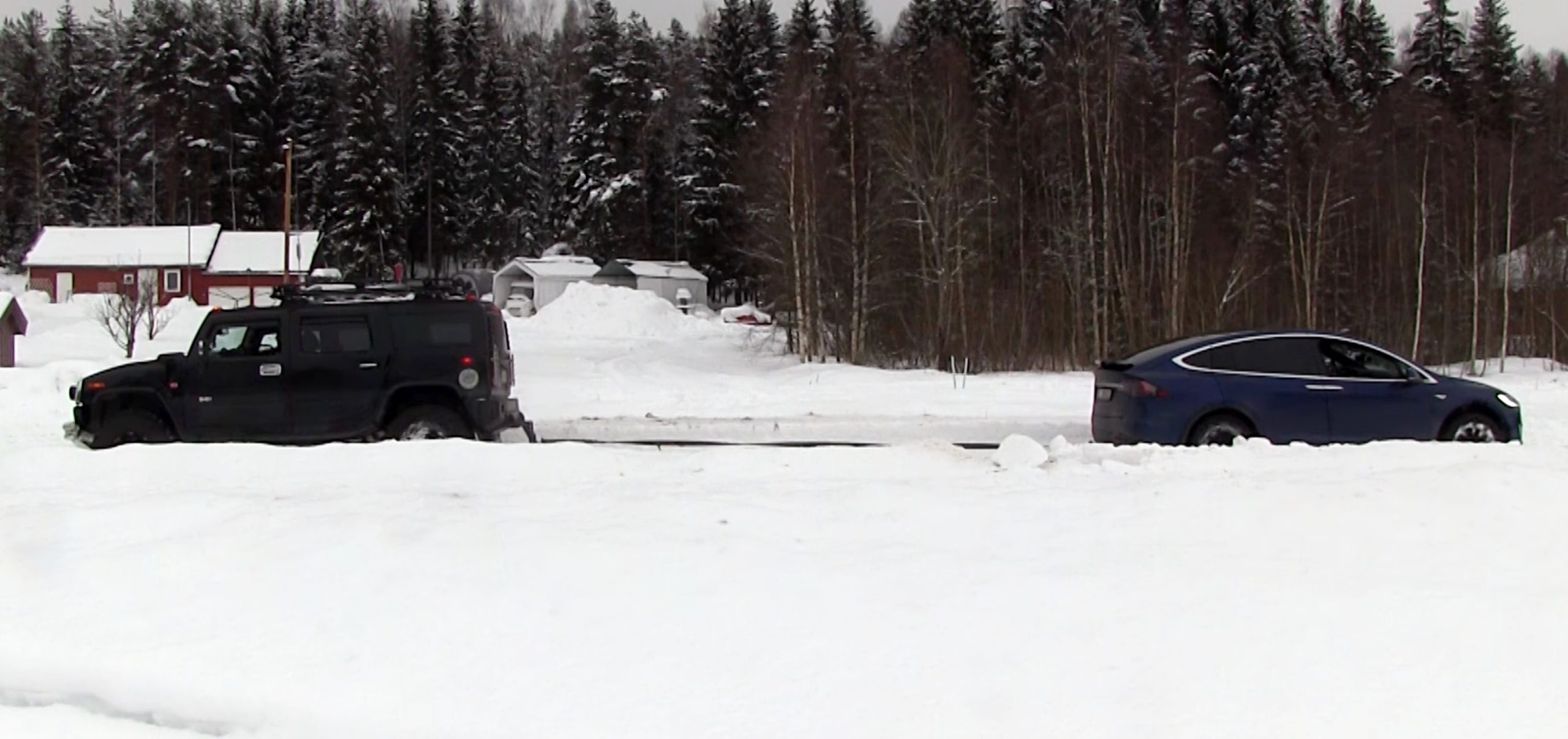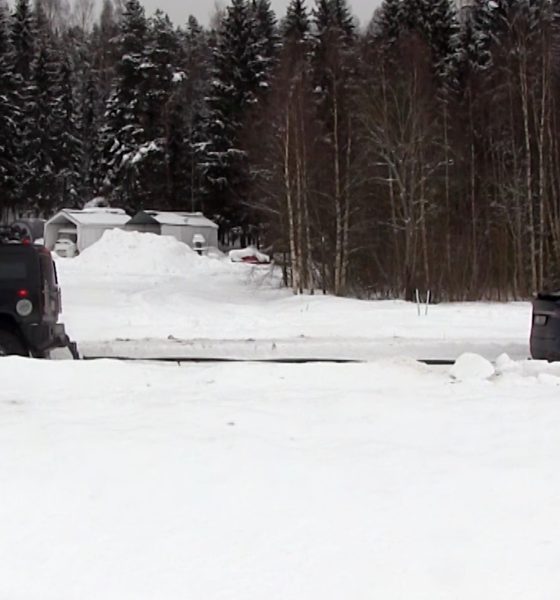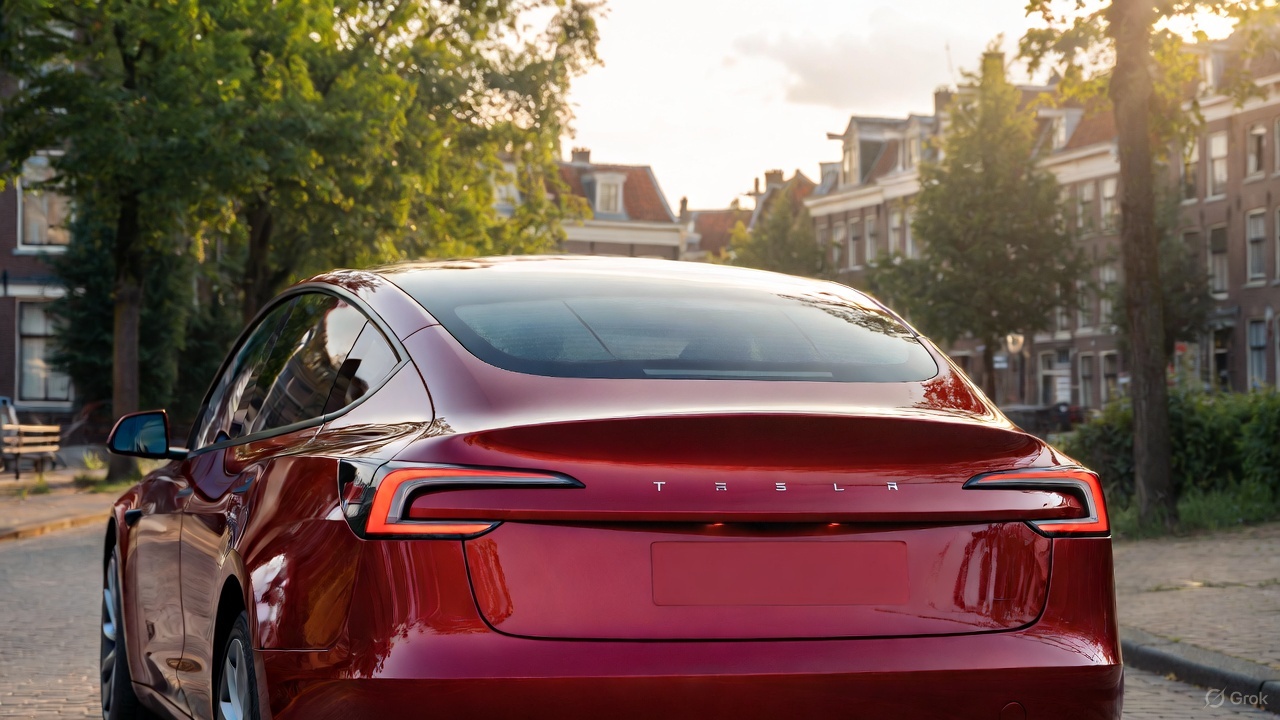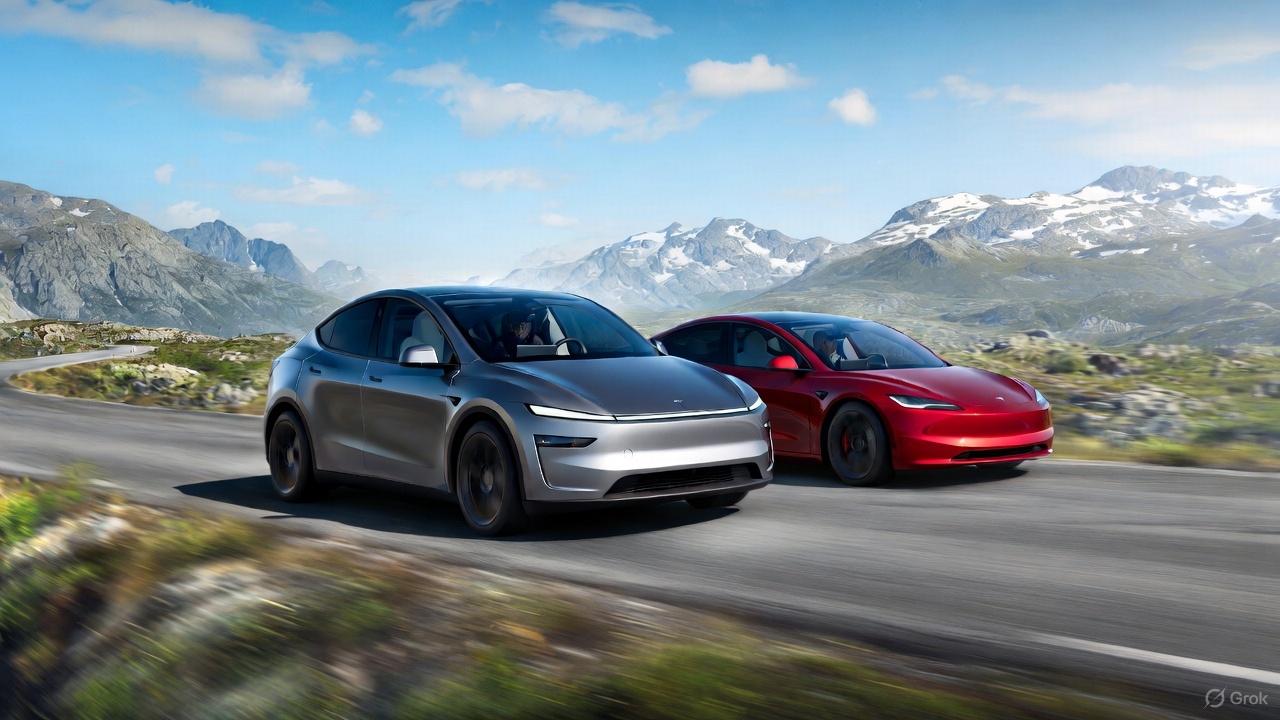

News
Tesla Model X gets a tug-of-war rematch against Hummer H2
Tesla Youtuber Bjørn Nyland recently got a chance to engage in a tug-of-war rematch with the same Hummer H2 that beat his Tesla Model X P90D back in December. This time around, the Model X was equipped with new tires and an adjusted tow hitch so that the height between the two vehicles was more balanced. So how did the electric SUV fare? As it turns out, far, far better.
The last time Bjorn pitted his Model X against the Hummer H2 in a tug-of-war battle, the Model X ended up losing two out of three rounds. On paper, the two vehicles were well-matched, with the electric SUV holding the advantage in torque and the GM-built American classic having an edge in weight.
During the first tug-of-war battle, many of Bjørn’s followers noted that the Hummer appeared to have held its brakes before attempting to pull the Model X P90D, giving it a slight advantage. Coupled with a higher tow hitch that applied an upward force on the back of the electric SUV, it was not very surprising to see the Model X P90D bow down to the Hummer H2.
As could be seen in Bjorn’s Model X P90D vs Hummer H2 rematch video, however, things changed a lot when these advantages were removed from the GM-built SUV. For one, the tow hitch between the two vehicles was balanced this time around, and from the video, it seemed like both vehicles tried pulling at each other at the exact same time. The result of the rematch was a tie, with all four rounds ending with neither SUV significantly pulling the other. The Model X had a near-win in the fourth round, however, when the electric SUV’s tires found some traction.
Apart from the balanced tow hitch, one other factor that contributed to the Model X’s improved performance against the Hummer H2 was its new tires. As noted by the Tesla YouTuber, the electric SUV’s Nereus NS806 studless tires proved to be grippy on the frozen grass, mud, and snow on the road. With this extra grip, it was far more difficult for the GM-built SUV to pull the Model X P90D.
As we noted in a previous report, Bjørn’s Model X P90D recently accomplished another remarkable feat, pulling a 95,000-pound semi-trailer across an icy road without any difficulty. In that exhibition of the Model X’s strength, the Norway-based Tesla Youtuber noted that the semi-trailer was placed in Neutral gear as the electric SUV performed what seemed like the vehicular equivalent of a David and Goliath feat.
While the feats of strength displayed by Bjørn’s Model X P90D are remarkable, much of the reason behind the electric SUV’s astounding performance really comes down to traction and some good, old physics. The Model X, after all, features an all-electric drivetrain that is capable of producing maximum torque at 0 RPMs, allowing it to pull the 95,000 semi-trailer and resist the force of the Hummer H2. Nevertheless, it’s hard to deny the sheer enjoyment of seeing an electric SUV battling it out with a monster ICE.
Watch the Model X vs. Hummer H2 rematch below.

News
Blue Origin announces Super-Heavy New Glenn 9×4 to Rival SpaceX Starship
The announcement followed the company’s successful NG-2 launch on November 13.

Blue Origin has revealed plans to develop New Glenn 9×4, a “super heavy” rocket designed to deliver 70 metric tons to low-Earth orbit and directly compete with SpaceX’s Starship.
The announcement followed the company’s successful NG-2 launch on November 13, which deployed NASA’s ESCAPADE (Escape and Plasma Acceleration Dynamics Explorers) Mars mission and landed the first stage.
Upgraded engines and reusability
As noted in a Universe Today report, Blue Origin will roll out upgraded BE-4 engines producing 640,000 lbf each, up from 550,000 lbf, starting with NG-3. This should boost the New Glenn rocket’s total first-stage thrust to 4.5 million pounds. Upper-stage BE-3U engines are expected to improve from 320,000 lbf to 400,000 lbf over the next few flights as well.
“These enhancements will immediately benefit customers already manifested on New Glenn to fly to destinations including low-Earth orbit, the Moon, and beyond. Additional vehicle upgrades include a reusable fairing to support increased flight rates, an updated lower-cost tank design, and a higher-performing and reusable thermal protection system to improve turnaround time,” Blue Origin noted.
New Glenn “Super Heavy” 9×4
The super-heavy New Glenn 9×4, with nine BE-4s on the booster, four BE-3Us on the upper stage, will feature an 8.7-meter payload fairing. Blue Origin expects New Glenn 9×4 to be capable of transporting 70 metric tons to LEO, 14 tons to GSO, and 20 tons to trans-lunar injection, as noted by the company in a blog post. This is very impressive, as New Glenn 9×4’s capacity exceeds Falcon Heavy, SpaceX’s largest rocket available to consumers today. Falcon Heavy is capable of carrying up to 64 metric tons to low Earth orbit in a fully expendable configuration.
That being said, SpaceX’s Starship’s capacity is extremely impressive. As per SpaceX, Starship is designed to be capable of carrying up to 100-150 metric tonnes to orbit in its fully reusable configuration. At its expendable configuration, Starship’s capacity enters unheard-of territory, with SpaceX stating that the vehicle could transport 250 metric tonnes of cargo.
News
Tesla FSD approved for testing in Nacka, Sweden, though municipality note reveals aggravating detail
Nacka, Sweden, a municipality just a few miles from Stockholm, has given its approval for FSD tests.

Tesla has secured approval for FSD testing in an urban environment in Sweden. As per recent reports from the Tesla community, Nacka, Sweden, a municipality just a few miles from Stockholm, has given its approval for FSD tests.
A look at the municipality’s note regarding FSD’s approval, however, reveals something quite aggravating.
FSD testing approval secured
As per Tesla watcher and longtime shareholder Alexander Kristensen, Nacka is governed by the Moderate Party. The shareholder also shared the municipality’s protocol notes regarding approval for FSD’s tests.
“It is good that Nacka can be a place for test-driving self-driving cars. This is future technology that can both facilitate mobility and make transportation cheaper and more environmentally friendly,” the note read.
The update was received positively by the Tesla community on social media, as it suggests that the electric vehicle maker is making some legitimate headway in releasing FSD into the region. Sweden has been particularly challenging as well, so securing approval in Nacka is a notable milestone for the company’s efforts.
Aggravating details
A look at the notes from Nacka shows that FSD’s proposed tests still met some opposition from some officials. But while some critics might typically point to safety issues as their reasons for rejecting FSD, those who opposed the system in Nacka openly cited Tesla’s conflict with trade union IF Metall in their arguments. Fortunately, Nacka officials ultimately decided in Tesla’s favor as the company’s issues with the country’s unions are a completely different matter.
“The left-wing opposition (S, Nackalistan, MP and V) voted no to this, referring to the fact that the applicant company Tesla is involved in a labor market conflict and does not want to sign a collective agreement. We believe that this is not an acceptable reason for the municipality to use its authority to interfere in a labor law conflict.
“Signing a collective agreement is not an obligation, and the company has not committed any crime. The municipality should contribute to technological development and progress, not work against the future,” the note read.
News
Tesla Model 3 and Model Y named top car buys in Norway
Despite growing competition from European and Korean brands, both models stood out for their balance of price, performance, and everyday usability.

Norway’s annual roundup of the best car purchases featured Tesla’s two main sellers this year, with the Model 3 and Model Y securing top positions in their respective segments.
Despite growing competition from European and Korean brands, both models stood out for their balance of price, performance, and everyday usability. The verdict comes as electric vehicle adoption remained above 95% of new vehicle sales in the country.
Tesla Model 3 strengthens its value position
Among compact EVs, the Tesla Model 3 maintained its position as the best overall buy thanks to its strong blend of performance, efficiency, and updated features. Reviewers noted that every trim offered compelling value, especially with the all-electric sedan’s improved cabin ergonomics and the return of the turn-signal stalk, which was one of the few previous complaints among drivers.
The Model 3’s mix of long-range capability, low operating costs, and responsive handling has continued to set the benchmark for compact EVs in Norway. While competitors from Hyundai, Volkswagen, and Peugeot have narrowed the gap, Tesla’s price-to-capability ratio has remained difficult to beat in this segment, Motor.no reported.
“The Model 3 clearly offers the best value for money in the compact class, no matter which version you choose. Now it also gets the turn signal lever back. This eliminates one of the few flaws in a driving environment that many believe is the best on the market,” the publication wrote.
Tesla Model Y claims its crown
The Tesla Model Y emerged as Norway’s top family-car purchase this year. The latest refresh introduced improvements in ride quality, styling, and interior materials, allowing the Model Y to deliver a more premium driving experience without a substantial price increase.
Reviewers praised its spacious cabin, strong safety profile, and practical range, all of which reinforced its appeal for families needing an all-purpose electric crossover. The Model Y remains especially notable given its continued popularity in Norway even as Tesla faces declining sales in other global markets.
“The Model Y is back as the winner in the family class. The upgrade in the new year was even more extensive than expected. It is a slightly more elegant and significantly more comfortable Model Y that solidifies its position as Norway’s best car purchase in the most important class,” the Norwegian motoring publication noted.









